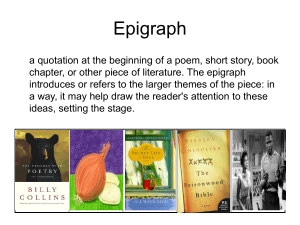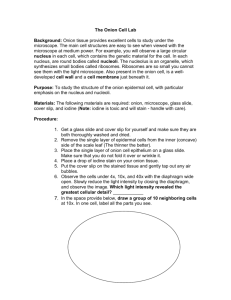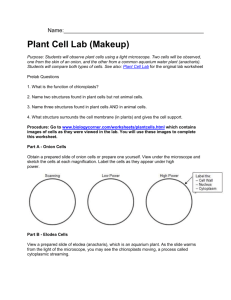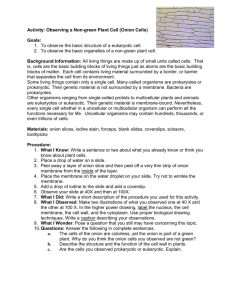final reflection wiki paper on Social Penetration Theory
advertisement
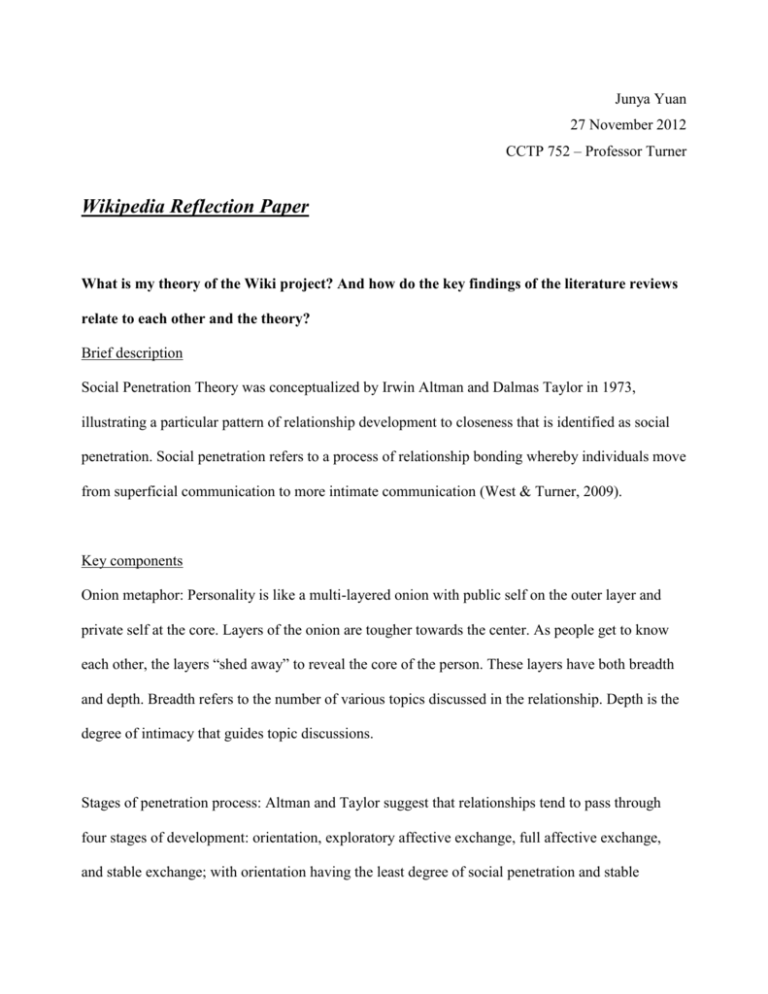
Junya Yuan 27 November 2012 CCTP 752 – Professor Turner Wikipedia Reflection Paper What is my theory of the Wiki project? And how do the key findings of the literature reviews relate to each other and the theory? Brief description Social Penetration Theory was conceptualized by Irwin Altman and Dalmas Taylor in 1973, illustrating a particular pattern of relationship development to closeness that is identified as social penetration. Social penetration refers to a process of relationship bonding whereby individuals move from superficial communication to more intimate communication (West & Turner, 2009). Key components Onion metaphor: Personality is like a multi-layered onion with public self on the outer layer and private self at the core. Layers of the onion are tougher towards the center. As people get to know each other, the layers “shed away” to reveal the core of the person. These layers have both breadth and depth. Breadth refers to the number of various topics discussed in the relationship. Depth is the degree of intimacy that guides topic discussions. Stages of penetration process: Altman and Taylor suggest that relationships tend to pass through four stages of development: orientation, exploratory affective exchange, full affective exchange, and stable exchange; with orientation having the least degree of social penetration and stable exchange having the broadest and deepest disclosure pattern. In addition, relationship development may also go to deterioration, or growing apart. Breadth and depth: "Both depth and breadth are related to the Onion Model. As the wedge penetrates the layers of the onion, the degree of intimacy (depth) and the range of areas in an individual’s life that an individual chooses to share (breadth) increases." (Wikipedia) Rewards and Costs: The decision to disclose is based on the perceived rewards the person will gain if he or she discloses information. If a person perceives that the cost of disclosing information is greater than the rewards for disclosing information then no information will be disclosed. The larger the reward - cost ratio the more disclosure takes place. Literature Review Without doubt, the value of Social Penetration Theory initially lies into the area of interpersonal communication. Scholars have been using the concepts and onion model to explore the development of counter-sex/romantic relationships, friendships, parent-child relationships, employer-employee relationships, and caregiver-patient relationships and beyond. Some of the key findings are described as follows. Researchers has found out that in parent-child relationship, information derived from the child's spontaneous disclosure in daily life activities was most closely connected to generating and maintaining his/hers trust in parents, indicating the importance of developing shallow but broad relationship with children like everyday conversation but not long-lasting profound lectures (Kerr, Stattin & Trost, 1999). As for sexual relationships, study has shown that in real life adolescent tend to engage in sexual disclosure according to the level of relationship intimacy, which supports the social penetration model; but in cyberspace, men present a stronger willingness and interests to communicate without regarding the current intimacy status or degree (Yang, Yang & Chiou, 2010). Another scholar also posits that when initiating a romantic relationship, there are important differences between internet dating site and other spaces, such as the depth and breadth of the self-disclosed information taken place before they go further to one-on-one conversation (Monica, 2007). Scholars also use this theory to examine other factors influencing the social penetration process in close friendship. As Mitchell and William (1987) put it, ethnicity and sex do have impact on the friendship foster. The survey results indicate that more breadth of topics occurs in penetration process in black friendship than the white. According to Jih-Hsin Tang, Cheng-Chung Wang (2012) bloggers tend to have significantly different patterns of self-disclosure for different target audiences. The online survey which has involved 1027 Taiwanese bloggers has examined the depth and breath of what bloggers disclosed to the online audience, best friend and parents as well as nine topics they used to reveal. Regarding to online chat, a research conducted by Dietz Uhle, Bishop Clark and Howard (2005) shows that "once a norm of self-disclosure forms, it is reinforced by statements supportive of self-disclosures but not of non-self disclosures." Regarding the caregiver-patient relationship, developing a social penetrated relationship with institution disclosed breadth and depth information and multiple effective penetration strategies is critical to the benefits of the patients (Yin & Lau, 2005). Nurses could apply the theory into the daily interactions with patients, so as the doctors' articulations when consulting or announcing. In addition, the relationship between nonverbal behavior and social penetration process has been an hot topic. An interesting study conducted among university drama student actresses discovers that casual acquaintances discussing intimate topics tend to use more intensive nonverbal behaviors than the good friends do (Keiser & Altman, 1976). The ideas posits by the theory have been researched, re-examined by scholars when look at organizational communication. Some scholar explored the the arena of company policy making, demonstrating that the effect which company policies posing on the employees ranges from slight attitudinal responses (such as dissatisfaction) to radical behavioral reactions (such as conflicts, fight and resignation). In this way, sophisticated implementation of the controversial policies is highly required. When comes to the application in the era of new media, represented by social networking sites, there is an increasing number of surveys done about how SNSs affect interactions between human beings. Take Facebook as an example, users are able to determine their level and degree of selfdisclosure by setting their privacy settings (McCarthy, 2009). What I have done to perfect the Wiki page and What challenges have I met? Amendments to whole content structure Firstly, I trimmed the introduction part a little bit to make it more concise and leave more apace for the main part to go into detail. It contained some grammar mistakes, typos and repetitive statements. Although Professor Turner has suggested us not deleting the content already existed but focus on riching the article, I believed some of the words were really unnecessary and might confuse the readers. Secondly, I transported the Breadth and Depth part under the Onion Metaphor section for the following two reasons. On the one hand, the breadth and depth illustration is closely related to the onion analogy, so it might be more effective and efficient for the readers to connect these the breadth and depth with the four major stages of penetration process when they are both under the title of Onion Metaphor. On the other hand, the previous weight of each section is uneven and the whole framework of the page is highly disproportional, say that the Onion Metaphor is only three sentences while the Computer Mediated Communication and Rewards and Costs Assessment are heavy texted. In addition, I modified and reorganized the original Breadth and Depth section by dividing the content into three small subsections, which are breadth, depth and the relationship between breadth and depth. Formerly, the part was poorly-arranged with a huge amount of redundant sentences and some of them were even inconsistent with the clearer part of the article. Briefly speaking, this part is like a patchwork of copying and pasting bullet-points from different places. Thirdly, I developed the original Computer Mediated Communication part into a much broader covering section - Extensive Research and Applications. I've expanded the previous CMC part into the subcategory of The Theory in New Media Age: Computer Mediated Communication and added Online Dating and Bloggers and Online Chatters to integrate with the Social Networking Sites part to serve as the examples of new media era application. By adopting Deepa's advice, I've listed a counterexample in the section of online dating to illustrate the violated case of the social penetration theory. Then based on the New Media Age part, I created two more sections- Interpersonal Communication and Organizational Communication and developed them on the basis of the literature review materials. Lastly but by no means the least, I pulled out the Ethical Egoism part and placed it in the end of the major content because personally I deeply doubt the appropriateness of the existence of this term. In a word, I spent most of my time and effort sorting out how to make the page clear-structured and logically instructive. Here I want to thank Professor Turner for her supervision and pressure on our literature review process. Without the bittersweet seek- filter- summarize- integrate experience, I will never be able to discover the hidden charm of this theory beyond the text book and in-class discussion. Also, I really appreciate the precious peer review from my colleagues, Barrie, Deepa and Ailin. I've benefited a lot from their suggestions, including finding and discussing a counterexample of the theory, pulling in more examples from the literature search to add the robustness of the page, creating a history page, and making the criticism section into a paragraph instead of bullets. One thing worth mentioning while I reviewed my group members' wiki pages is that some theory has already been developed extremely robust (for instance, Barrie's Cognitive Dissonance Theory), so the space for improvement is relatively limited. Adding a considerable amount of Wiki internal links Altogether, I've added 18 internal links to the entry, including interpersonal communication, vulnerability, deterioration, onion, clichés, norms, appropriateness, plateau, thoughts, beliefs, values, withdrawal, sexual activity, anxiety, standards, desirability, dyadic relationship, and social networking sites. I must admit that at the very beginning, I was ridiculously eager to turn all those terms into blue as many as possible since it's kind of the easiest thing among the whole Wiki project. To be honest, I felt satisfactory when finishing adding more than 35 internal links. However, in less than half an hour, my Wiki page was labeled as containing too much links to disambiguation pages and I was totally stunned. Then I had to check every term and fix them by either linking to the right entry under the right category or deleting those ambiguous ones. i found Dablinks very helpful because it kept giving me a real-time listing of what disambiguation pages are linked by my article. Now there are fewer than 4 disambig links on the Social Penetration Theory page. Adding a photograph of onion to the Onion Metaphor Section When I saw the administrator of Wiki's request to have an image of the onion diagram on the talk page of Social Penetration Theory several years ago, I was considering adding one photograph of an onion in the article to improve its quality and vivid image. Since the Social Penetration Theory is sometimes called "Onion Theory", and the onion metaphor is assumed to be the major part of the theory, I found it might be very useful to give the readers an intuitive feeling and direct perception of the core content of the theory because visual power plays significant role in people's understanding, memorizing and conceptualizing process. Take myself for example, although I couldn't be more familiar with the Social Penetration Theory, whenever I think about this theory the first idea jump into my mind is the figure of onion with the beautifully arranged concentric layers, but not the founders' names nor the relating social exchange equations. With this appropriate and tangible metaphor, people who are new to this theory appropriate will explore deeper and wider about this theory, such as making comparison with the breadth and the superficial extensive topics in the early stage of a relationship. I had a hard time seeking for the right picture of onion, although there are bunches of adorable photographs of onion on the Internet. I didn't expect that the Wiki has such a strict requirement and complicated process of adding pictures until I tried to upload several pictures without clear source or proof of the owners’ permission of use. Then I had to turn to the wiki itself to find whether there will be any photo I could use that had already been authorized to copy and share. After searching and screening, I chose to use one of the pictures on the Onion Wiki page. It was not my ideal one, compared to those unclaimed but awesome onion photos, but it has fully displayed the muti-layerd onion skins rather than just showing a red lantern shell. Another challenge I was not ready for is the insertion. Having failed numerous times, finally it was the Wiki Help's "Picture tutorial" and "Uploading images" sections saved my life. I've been told that adding picture to Wiki page is kind of tricky and difficult, nevertheless, I do feel a picture of the real onion is an important complementary factor to perfect the whole theory page. How do I relate my Wiki assignment experience to the theories learnt in this course? As far as I am concerned, I would like to relate my Wiki assignment experience to the following three course theories. Uncertainty Reduction Theory At the beginning of the editing process, I kept logging into the course blog to check out the progresses made by the other classmates as to make sure that I was at the same pace with my colleagues. I was trying hard to reduce uncertainty as uncertainty causes stressful and discomfort feelings that are hard to wipe out from my mind. However, as I’ve gained confidence in myself and my page, the uncertainty decline, thus information-seeking behavior decreases. In regard of the peer review part, I found the intimacy degree of the most communication content (e.g. comments and recommendations) was relatively low due to high level of uncertainty. We were not sure about whether other people’s situation was the same as ours, including the development of the existing page, the quantity and quality of the available literature materials, the application range of the theory and so on, therefore we became very cautious to give any essential advices in order to avoid hurting others’ feelings. Media Ecology Theory After turning from the outsider into the insider of Wikipedia community, I strongly feel that the Wiki is a well-functional system as environment. It has its own grammar, rhetoric and semiotics of communication. In this specific environment, we need to learn how to present our thoughts and communicate with other community members. Taking the talk page and editing format as an example, they are unique and complicated to beginners when compared with other online word editing tools but they are the rule and norms inside the Wikipedia group. Every editors, no matter professionals or amateurs, no matter wiki-holic or students under the academic pressure (joking), they live and chat based on the same principles and regulations. I do have the feeling that we’re fishes in the wiki-water. It’s hard to see when we’re swimming in it but what we do and what we see are all functioning in the huge organization based on the settled mechanism. What will I recommend to improve the Wiki community and the Wiki project courses? Based on my wiki project experiences, I would like to suggest that every student have the relatively same level of entry to work on. Because some theories are a little bit trickier than the others and that might be unfair to students who are assigned the difficult ones. Of course, it is never easy to balance every project and make everybody satisfied, we could try out best to get each student a term with as much potential as possible. As to the Wiki community, I think the experiences might be more pleasant if the userface was more clearly and vividly displayed and organized. To green hand like me, the early phase of editing is striving because at the first glance of the various strange code and heavy loaded texts, I had the feeling of fear and uncertain. It took me quite a long time to gain enough courage to make any edits. If not with the pressure Professor Turner periodically imposed, I’m pretty sure that the time would be much longer. In this way, it has prohibited quite a lot people who might want to have a try or contribute what s/he knows to the interested entries. Another thing I feel not good is the notification messages. The cold tone of the notifications, both suggestions and warnings are beneath the human character, just like a robot. Maybe Wiki could improve that a little bit. References Baack, D. (1991). The personal impact of company policies: A social penetration theory perspective. Journal of Managerial Issues, 196-219. Dietz-Uhler, B., Bishop-Clark, C., & Howard, E. (2005). Formation of and adherence to a selfdisclosure norm in an online chat. CyberPsychology & Behavior, 8(2), 114-120. Hammer, M. R., & Gudykunst, W. B. (1987). The influence of ethnicity and sex on social penetration in close friendships. Journal of Black Studies, 418-437. Keiser, G. J., & Altman, I. (1976). Relationship of nonverbal behavior to the social penetration process. Human Communication Research, 2(2), 147-161. Kerr, M., Stattin, H., & Trost, K. (1999). To know you is to trust you: Parents' trust is rooted in child disclosure of information. Journal of Adolescence, 22(6), 737-752. McCarthy.(2009). Social penetration theory and facebook. Informally published manuscript, Fairfield University, Fairfield,CT, Retrieved from http://www.anniemccarthy.net/uploads/1/5/0/4/1504159/2009-aprilsocial_penetration_theory_and_facebook.pdf. Tang, J. H., & Wang, C. C. (2012). Self-Disclosure Among Bloggers: Re-Examination of Social Penetration Theory. Cyberpsychology, Behavior, and Social Networking, 15(5), 245-250. Wai-Yin, Alice Lau. (2005, 07). Social penetration between family and institution care. 16th international nursing research conference, Hawaii. Whitty, M. T. (2008). Revealing the ‘real’me, searching for the ‘actual’you: Presentations of self on an internet dating site. Computers in Human Behavior,24(4), 1707-1723. Yang, M. L., Yang, C. C., & Chiou, W. B. (2010). Differences in Engaging in Sexual Disclosure Between Real Life and Cyberspace Among Adolescents: Social Penetration Model Revisited. Current Psychology, 29(2), 144-154.

